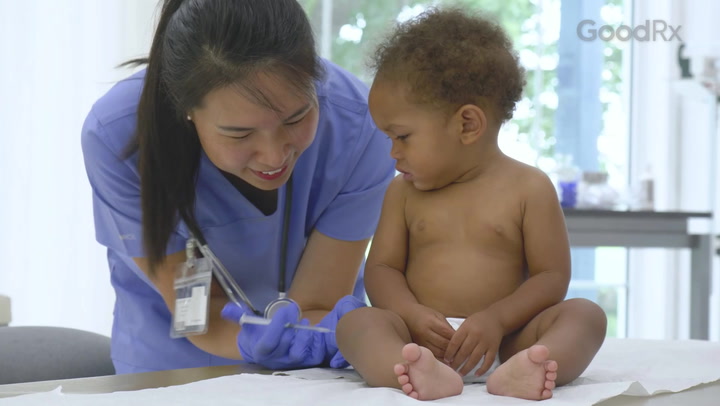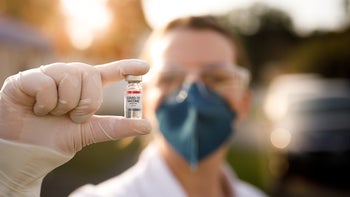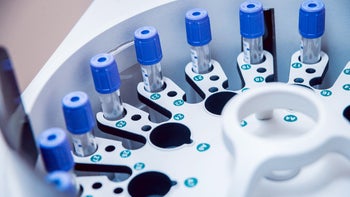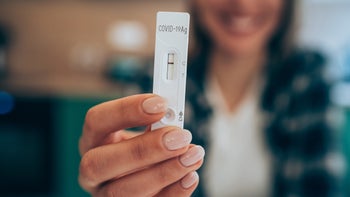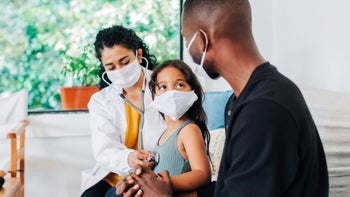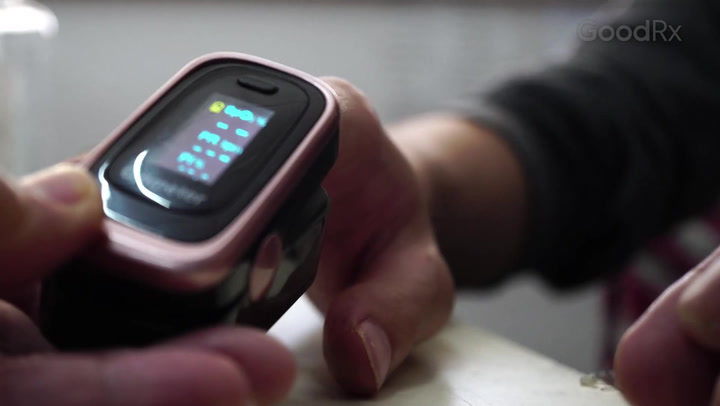
Do You Have a Sinus Infection or COVID-19?
Key takeaways:
COVID-19 and sinus infections can have similar symptoms, such as a sore throat, headache, and cough.
Both illnesses are contagious, but the virus that causes COVID is more likely to spread than a sinus infection. COVID can also be more dangerous.
The best way to tell the difference between COVID and a sinus infection is with COVID testing and guidance from a healthcare professional.
Upper respiratory infections are common, especially during the cooler months. Now that COVID-19 has joined the landscape, it’s even more challenging to figure out what’s making you sick.
Sinus infections are particularly confusing. They often start as a common cold and can be slow to get better over time. Sometimes, they even need treatment with antibiotics. But there are some important differences.
What’s the difference between COVID and a sinus infection?
A sinus infection occurs when viruses or bacteria cause inflammation and fluid buildup inside your sinuses. Sinuses are the hollow spaces in the bones of your face. Adults have sinuses behind their cheeks, nose, and forehead. Usually, these spaces are filled with air. When you have a sinus infection, these areas get filled with mucus instead of air, leading to painful pressure.
Search and compare options
COVID is an infection caused by the SARS-CoV-2 coronavirus. When the virus infects you, it multiplies throughout your body. COVID can cause symptoms that range from mild to severe. And Omicron subvariants of COVID can cause symptoms that resemble the common cold and other upper respiratory infections more than ever before.
Which symptoms do COVID and sinus infections share?
Both COVID and sinus infections are upper respiratory infections. Both can cause:
Cough
Runny or stuffy nose
Sore throat
Fever
Symptoms unique to sinus infections
By definition, sinus infections happen inside the sinuses. So, when you have a sinus infection, your symptoms come from that location. But the inflammation and drainage of sinusitis can sometimes lead to problems elsewhere.
Face pain and pressure are the hallmarks of a sinus infection. Nasal congestion is also very common. People with COVID illness can experience a runny nose or congestion as well, but not as often as with a sinus infection.
Sinus infections tend to cause:
A feeling of pressure inside the face, like pain behind the eye, cheek pain, or an intense headache
Nasal congestion
Runny nose
COVID-19 versus the flu: Here’s how to tell if your symptoms are from the flu or COVID.
Stubborn sinus infections: Sinus infections often go away on their own, but there are signs that a sinus infection is more serious and needs medical attention.
Cold versus sinus infection: Learn the best way to figure out if you have a cold or a sinus infection.
And when you have a sinus infection, the drainage of mucus down your throat can cause:
Sore throat
Upset stomach or nausea
Symptoms unique to COVID
COVID infection is more generalized than a sinus infection. When you have COVID illness, the virus infects cells in different areas of the body. Because of this, COVID can cause a variety of symptoms, many of which might seem unrelated to each other.
In comparison to sinusitis, COVID is more likely to cause lung-related symptoms, especially a cough. You’re also more likely to have a fever with COVID. Loss of taste or smell is another symptom that’s more common with COVID.
Other symptoms that are more likely with COVID versus sinusitis include:
Dry cough
Trouble breathing or shortness of breath
Chest pain
Fatigue
Muscle or body aches
Stomach ache or diarrhea
Keep in mind that COVID symptoms aren’t always predictable. Some people don’t have any symptoms at all: They’re known as “asymptomatic carriers.” In other people, symptoms get worse quickly and need emergency care.
If you lose your sense of smell, does that mean you have COVID?
In the early stages of the COVID pandemic, losing your sense of smell or taste usually meant you had COVID infection. But once Omicron subvariants came onto the scene, loss of smell became much less frequent.
Some studies suggest that about 13% of people now lose their sense of smell with COVID infection. This means that it can be trickier to use this symptom to tell COVID apart from a sinus infection. That’s because sinus infections are also a common cause of losing your sense of smell.
Here’s one thing to keep in mind: If a sinus infection causes your loss of smell, it’s usually because of local inflammation and congestion in your nose. So, you’ll probably also have a runny nose and nasal congestion. With COVID, you can lose your sense of smell even without having any nasal symptoms.
How else can you tell a sinus infection and COVID apart?
The best way to tell the difference between sinusitis and COVID is to take a COVID test.
An at-home rapid antigen test can usually give you an answer within 15 minutes. But it’s important to know that rapid tests can give a false negative result. This means that the test is negative when you actually do have COVID infection. For this reason, the FDA recommends repeating a COVID test 48 hours later if you have symptoms and your first test is negative.
The timing of your symptoms can help you tell apart a sinus infection from COVID too. Most sinus infections start with a viral cold. After a few days of mild cold symptoms, the fever and head or face pressure of a sinus infection become noticeable. Symptoms often get worse after 7 to 10 days. In fact, sinus infections usually aren’t diagnosed or treated until symptoms have been around for 10 to 14 days.
By contrast, COVID symptoms usually get better after 7 to 10 days. But the pattern of symptoms may be different with each variant. And while breathing symptoms are less common with COVID now than they were, they’re still more likely with COVID than with sinusitis.
Is COVID more contagious than a sinus infection?
COVID is very contagious. The virus replicates in the nose and mouth, and it can easily spread to others when you talk, cough, or breathe.
Sinusitis isn’t contagious. Bacteria from deep inside your sinuses don’t spread easily to others. That said, many different respiratory viruses can lead to a sinus infection. And that underlying respiratory virus can still be contagious. Like the virus that causes COVID, these respiratory viruses spread through the air when you cough or sneeze.
Is COVID more serious than a sinus infection?
COVID can be life-threatening. While most people with COVID infection recover fully, it can lead to serious complications, including hospitalization and death. Some people develop health problems that can last for months or more, known as long COVID.
But sinus infections are rarely life-threatening. If a sinus infection hasn’t gone away on its own in 1 to 2 weeks, a course of antibiotics can usually treat it. More invasive treatments are rarely necessary.
What can you do to lower your risk of getting COVID or a sinus infection?
The best way to prevent COVID is to get vaccinated and stay up to date on your vaccines.
You can lower your chances of catching a sinus infection by practicing good hygiene, just like you would to avoid getting a cold or the flu. These strategies will help lower your risk of catching COVID as well.
Here are some steps you can take:
Wash your hands frequently.
Keep your distance from people who’re sick.
Avoid touching your eyes, nose, and mouth with unwashed hands.
Consider wearing a mask when in a crowded indoor setting during times of high respiratory disease activity.
What to do if you’re not sure whether you have a sinus infection or COVID
COVID is very contagious, so you’ll want to know if you have it. Even if your symptoms are mild, you could spread it to others. And they might not be so lucky.
That’s why taking a COVID test is a good idea when you get sick, especially if you could’ve been exposed to others with COVID. Keep in mind that COVID testing is helpful, but not perfect. So it might not pick up a COVID infection that’s just getting started.
If your COVID test result is negative and you’re feeling OK, it’s reasonable to treat your symptoms at home with over-the-counter remedies for a few days. After 3 or 4 days, your symptoms — including fever — should begin to improve on their own. If that’s not happening, and especially if things are getting worse, it’s time to make an appointment with a healthcare professional.
Of course, if you develop difficulty breathing, chest pain, or shortness of breath, you should get medical attention right away.
The bottom line
COVID-19 and sinus infections can cause similar symptoms, like nasal congestion, headache, and cough. But COVID illness can be more serious than a sinus infection. And sometimes COVID leads to long-term health problems. If you think you might have a COVID infection, the best course of action is to get a COVID test. Then talk with a healthcare professional if your symptoms are severe, worsening, or aren’t going away.
Why trust our experts?



References
Adam, D. (2022). How long is COVID infectious? What scientists know so far. Nature.
Battisti, A. S., et al. (2023). Sinusitis. StatPearls.
Butowt, R., et al. (2022). Why does the omicron variant largely spare olfactory function? Implications for the pathogenesis of anosmia in coronavirus disease 2019. The Journal of Infectious Diseases.
Centers for DIsease Control and Prevention. (2024). Symptoms of COVID-19.
LaFever, B. J., et al. (2022). Effects of nasal inflammation on the olfactory bulb. Journal of Neuroinflammation.
MedlinePlus. (2024). Sinusitis.
Speth, M. M., et al. (2020). Olfactory dysfunction and sinonasal symptomatology in COVID-19: Prevalence, severity, timing, and associated characteristics. Otolaryngology–Head and Neck Surgery.


